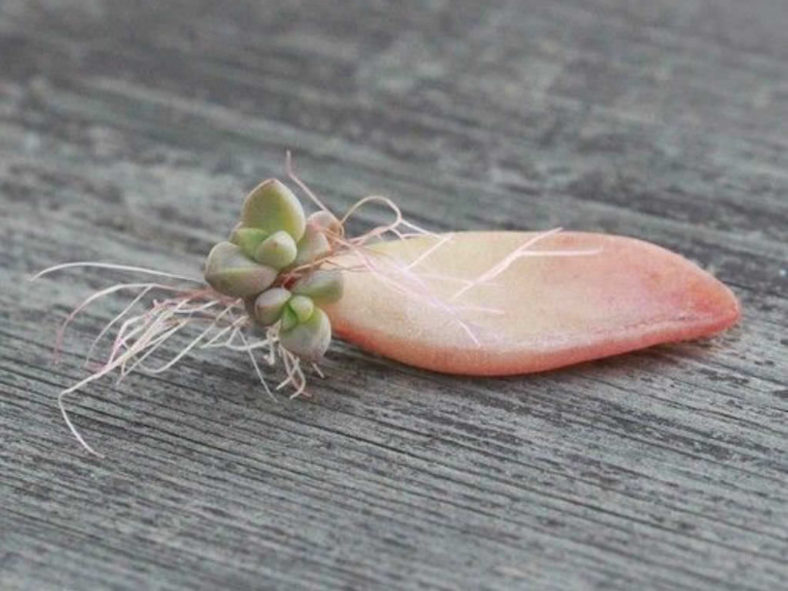Sometimes, it is easy to identify the best way to propagate a cactus or succulent, and other times, it is not. However, before you start, you first ask yourself: What kind of plant do I have? If you're unsure, the easiest way to learn is to organize the information you already know about your plant into categories. How is it shaped? Is it tall and thin, short and round, or has many small leaves? How does it grow? Does it grow all by itself? Are there many branches? Are there similar tiny plants that poke up out of the soil near it? Does it flower?
Questions like these are the first ones to ask yourself when considering propagation. The next consideration is how to propagate your cactus or succulent.
Seeds
Most cacti can be propagated by seeds. However, due to the slow growth of some species, other methods are sometimes more practical. Cacti with solitary growth habits are usually propagated by seed. Several species grow in this manner, including:
Stem Cuttings
Propagation by stem cuttings is an easy and practical method. Many cacti and succulents can be propagated by stem cuttings. If the plant has an elongated stem region actively growing, propagation by stem cuttings should be a successful route. Some recommendations are:
- Prickly Pears and Chollas: Opuntia
- Columnar Cacti: Cereus, Trichocereus (now included in the genus Echinopsis)
- Pincushion and Globular Cacti: Echinopsis, Mammillaria
- Euphorbia
- Stapeliads
- Bryophyllum
- Kalanchoe
- Graptopetalum.

Leaf Cuttings
Most succulents are usually propagated by leaf cuttings. Genera typically propagated by leaf cuttings include, but are not limited to:
- Gasteria
- Haworthia,
- Sansevieria
- Crassulaceae family (Kalanchoe, Sedum, Graptopetalum, etc.).
Grafting
Grafting requires a hardy rootstock compatible with the desired propagation candidate. This compatibility is essential. Without it, success in grafting is unlikely. For cacti and succulents, the following rules and some successful grafts have been reported and are shown below:
- Rootstock: Hylocereus trigonus
Compatible scions: Gymnocalycium mihanovichii, Echinopsis chamaecereus, Gymnocalycium denudatum, Parodia leninghausii, Cereus cristata, Parodia scopa, Mammillaria theresae, Rebutia pulchra - Rootstock: Hylocereus undatus
Compatible scions: Epiphytic cacti, like Christmas Cacti, most cylindrical and globular cacti - Rootstock: Cereus repandus
Compatible scions: Melanocactus, Rebutia muscula, Gymnocalycium mihanovichii 'Hibotan' - Rootstock: Echinopsis spachiana
Compatible scions: Cereus, Espotoa, Echinocactus, Lobivia (now included in the genus Echinopsis), Melocactus.
Bulbils, Tubers, Plantlets, and Offsets
Many succulents asexually propagate through underground lateral shoots. These shoots give rise to offsets or plantlets, which can be severed in the spring or summer from the parent lateral shoot to produce a self-sustaining new plant. Aloes and some Agaves form plantlets or bulbils on their flowering stalks. These plantlets and bulbils can be removed and planted as well. Kalanchoes produce small plantlets on the scalloped edges of their leaves. These plantlets can also be potted in warm conditions to grow self-sustaining plants.
- Bulbils and Plantlets: Kalanchoe, Aloe, Agave murpheyi, Agave vilmoriniana, Agave fourcroydes
- Offsets: Echinopsis, Mammillaria, Agave, Aloe, Haworthia, Crassulaceae family, Kalanchoe, Sedum, Graptopetalum
- Tubers: Ceropegia.
Source: ndsu.edu
Links
- Succupedia: Browse succulents by Scientific Name, Common Name, Genus, Family, USDA Hardiness Zone, Origin, or cacti by Genus